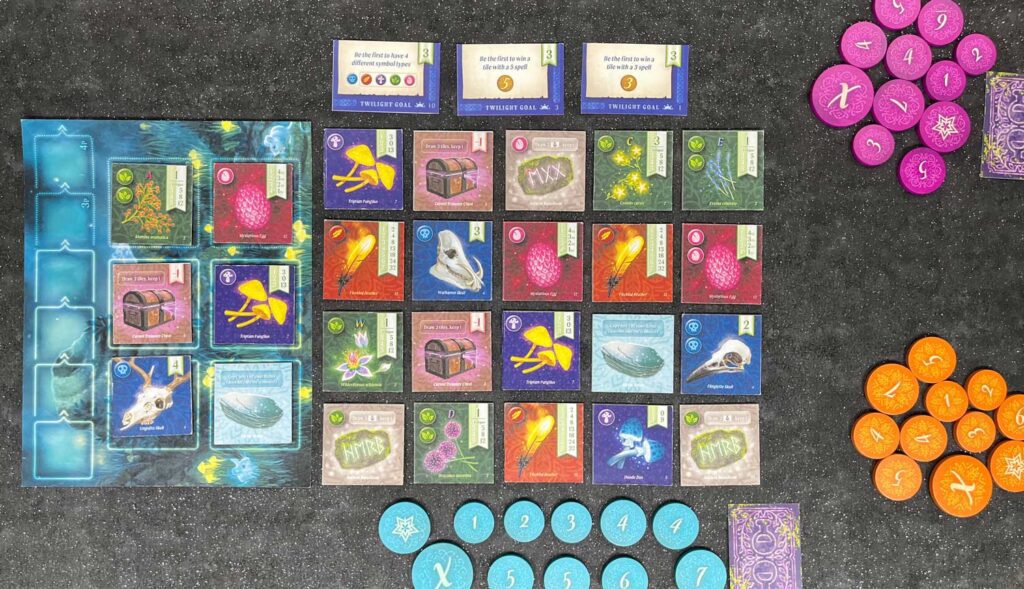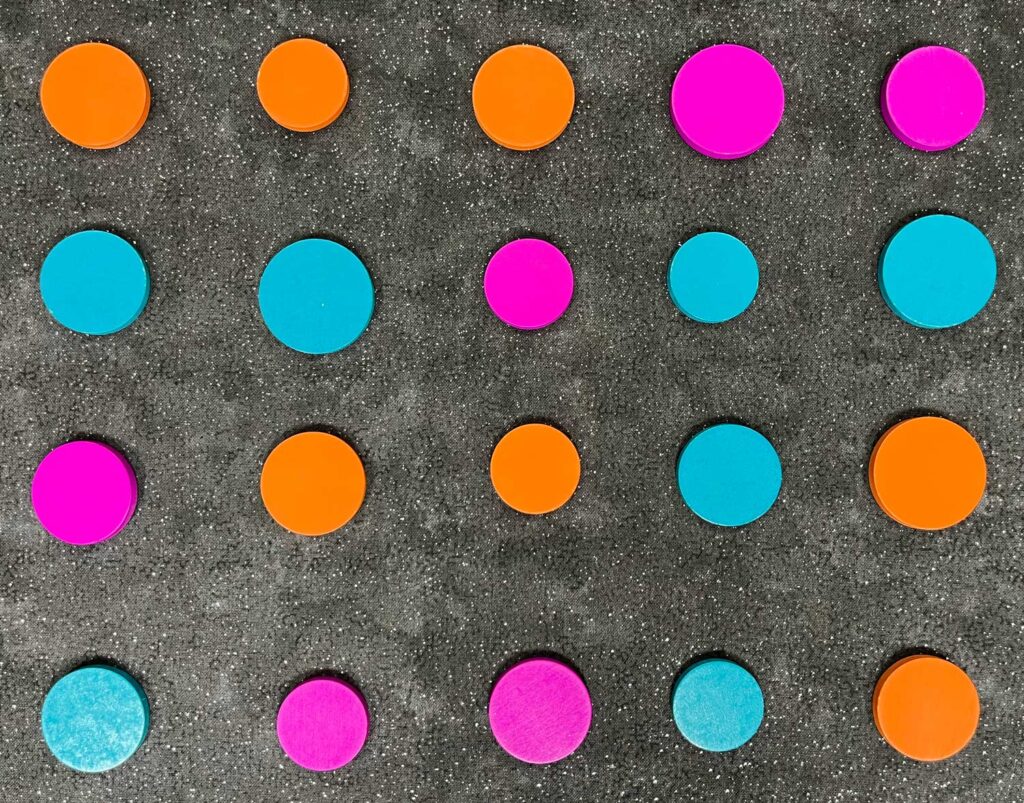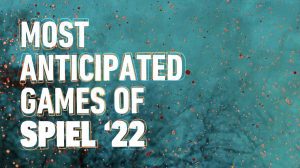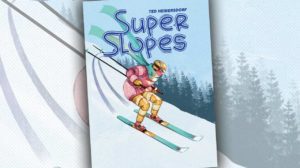Every time I review a Flatout Games title I feel like I need to insert a boilerplate sentence about how much I love their games, how creative and innovative their team is, and just how nice of a group they are. But this time I’ll just say that Nocturne is their newest title, and if you’ve enjoyed Point Salad, Cascadia, Calico, Verdant, and Fit to Print, you should check out Nocturne.

Nocturne Overview
In Nocturne, players take the role of foxes (foxen?) traveling through the woods at night. Throughout Twilight and Moonlight phases, players will place spell tokens onto forest tiles, gather mystical items for their collections and concoctions, and attempt to earn points for completing goals.

Before we jump into the review, let’s clarify a few terms.
- Forest tiles – tiles that are used to layout the “game board”. There are 80 in total, of 8 different types, each with their own variations. The starting board size is based on player count.
- Spell tokens – a set of identically numbered discs players use to claim forest tiles. Players will use fewer tokens at higher player counts.
- Twilight / Moonlight – Nocturne is broken into two phases, each with a number of turns equal to the number of forest tiles in play.
- A turn – A turn consists of players putting out spell tokens, and ends when one spell token is claimed by a player.
- Concoction cards – In addition to being used for scoring points based on their type, each forest tile also displays 1 or more “ingredient icons” which can be used to fulfill a concoction card; which are worth points at the end of the game.
- Forest sprite board – An overflow area which also displays valuable tiles; some of which can only be collected by placing tiles onto this board.
The goal of Nocturne is to earn the most points. This is done by collecting sets of forest tiles, completing concoctions, and fulfilling end of phase goals.

Nocturne Gameplay
On your turn you’ll place one of your numbered spell tokens onto a forest tile, following two main rules.
- The spell token you place must be adjacent to the token placed by the player who went before you. Diagonal placement is not allowed.
- The spell token you place must be higher than the one placed by the player who went before you. If you can’t place a higher token then you must pass.
While these rules are simple, there are layers of subtlety in which spell token you might place, or whether you should even place one at all. Knowing when to push forward and back off is key in this game.
After every player has passed, the winner of the turn is determined by whichever player has the highest numbered spell token on the board (or whichever player has played their star spell token, which is an “instant win”). In the following example, blue started the turn, followed by orange and pink. Blue placed their 6, orange attempted to beat it with their 7, pink passed, then blue claimed the victory with their star spell token.

The winner claims the tile under their winning spell token but leaves the token in place, flipped face down. In turn order, every other player then has two choices for each of their spell tokens: return it to their supply to be used on a future turn, or place it on the forest sprites board.
Spell tokens placed onto the forest sprites board take the rightmost spot, based on value. As new spell tokens are placed, the existing spell tokens might be rearranged. Higher value tokens always take the rightmost spot, pushing lower value tokens to the left. In the case of a tie, the newest token moves to the leftmost spot of that value. In the example below, the pink 5 was placed first, meaning the blue 5 is slotted in between the pink 5 and the pink 4.
![]()
End of the Phases
At the end of each phase, players retrieve their spell tokens from the forest sprite board, and in doing so also select one forest tile for their collection. They can do this once, for every spell token they have on the board.
Goal cards are awarded to the players who qualify for them. In the first phase only a single player can score a goal card, but at the end of the second phase, any player can qualify.

At the end of the first phase only, any player who still has remaining spell tokens is rewarded with a shadow spell token. These are higher value tokens, which make it easier to outlast and outplay opponents. The tradeoff is that players must discard their lowest value spell token from their original set so that all players have the same number of tokens.

Did you Say Set Collection?
I sure did! This is one of my favorite gameplay mechanics…tell me I need to collect things and you’d think I was featured in an episode of Hoarders. And the options in Nocturne are choice!

As mentioned previously there are 8 types of tiles, which can be gathered into 2 groups: scoring tiles and bonus tiles. Bonus tiles allow players to draw additional forest tiles or concoction cards, while scoring tiles follow a similar pattern as Sushi Go! I’m not going to cover these in depth but because this is where you’ll get the bulk of your points, let’s run through them.
There are 2 different types of mushroom tiles. Yellow and blue, and each of them score based on the number of tiles you have. Yellow mushrooms can be a tough sell—a set is worth 13 points, but if you start picking them up you become a target and it’s much harder to complete the set.
Firebird feathers score an increasing number of points based on how many you collect. Huge points await the player who gathers 7 of them, but you’ll likely lose the game because you’d have to focus solely on collecting them instead of diversifying.
Dragon eggs are worth a varying number of points. The player with the most dragon eggs gets 4 points for each egg in their collection, then 3 points for second place, etc. In our games, dragon eggs were always fought over, tooth and nail.
Skull tiles are worth a set number of points, but can tip the scales because you might be able to sneak them into your collection while other players are fighting over eggs and feathers.
Herb tiles require you to collect different types in order to score. Each herb card has a different illustration and a letter. Collect 5 different herbs and you’ll get 12 points for the set, plus the point listed at the top right of the tile.
Finally, the mirror tile is worth nothing by itself but can duplicate any tile in your collection at the end of the game, helping you to pull out a win in dragon eggs, get that last yellow mushroom, or hit that 7th firebird feather.

Final Thoughts on Nocturne
It’s safe to say that Flatout Games has a type. And that type is a nuanced game with multiple layers of puzzles, and these puzzles are getting trickier. In Calico, Cascadia, and Verdant, players need to think in colors (or suits) and sets. While the Flatout Games team balances complexity quite well, they do require you to think along multiple axes—no easy scoring in their games my friend.
So what about Nocturne? In the other games you only had to think about what you took away—but in Nocturne you also have to think about what you’re leaving behind. In addition to the set collection aspect of the game, you also have to consider the position and configuration of the spell tokens you leave on the board when winning a tile. This means you occasionally have to decide if you’d rather win a less valuable tile in order to secure an important spot on the board. While you’re not going to earn loads of points from the goal cards, they can easily be enough to win you the game if you’ve done well in the other areas of the game.
And speaking of those other areas, the tile collection portion can be cutthroat, with plenty of hate drafting and playing keep-away. If you see Jeannie picking up yellow mushrooms, you probably want to steer her away from that last mushroom tile on the board. And if Javier notices that you only need one more herb tile to get the 12 point bonus, you can bet he’ll either pick it up himself, or lead you away.
And finally, although I didn’t talk about concoctions much, a clever player can earn quite a lot of points by picking up runestone tiles and pairing new concoction cards with the ingredient icons on forest tiles they’ve already collected.

So if you love the idea of a pleasant walk through the forest at night, foxes, and puzzly games, then Nocturne will most certainly offer you an enchanted time. Back it on Kickstarter soon!











Nice! Looks good, may I know if I can repost and link this from my website? It’s at aintboard.org
Cheers!
You’re welcome to to link to our article, but I’m sorry you can’t repost it on your website.